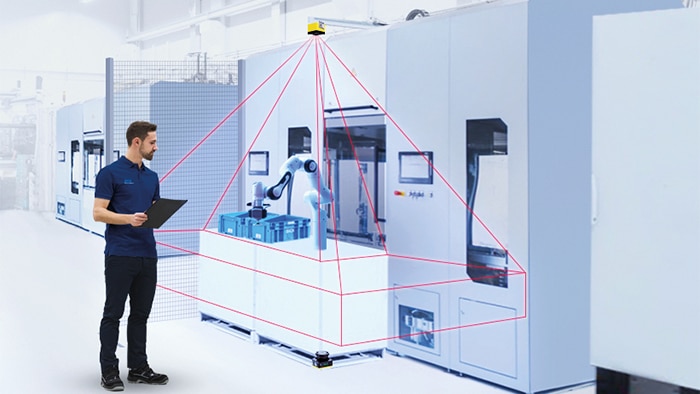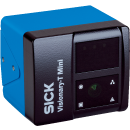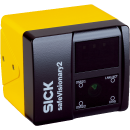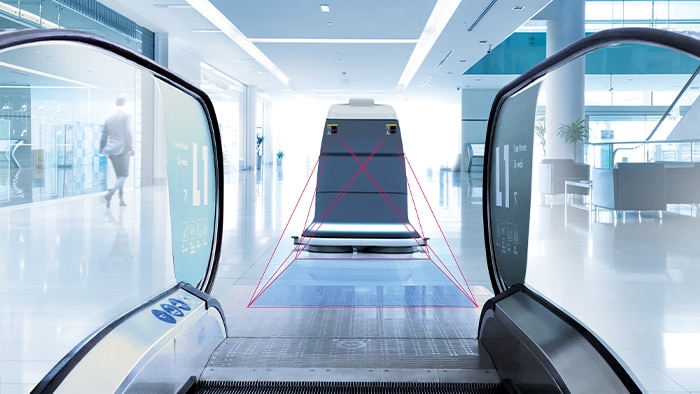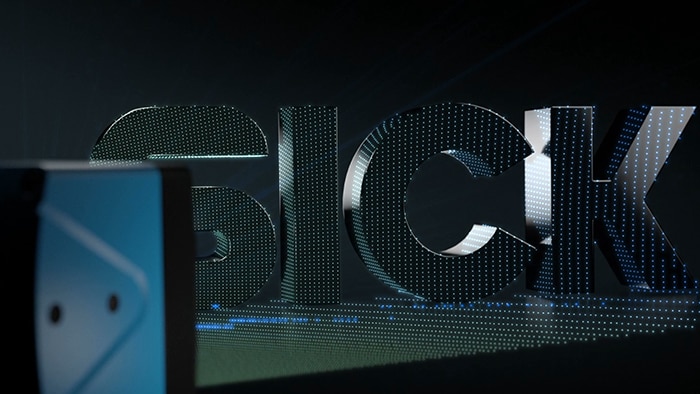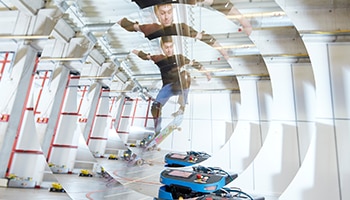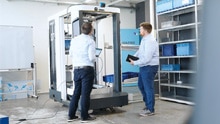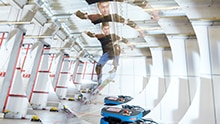Industrial automation calls for a keen eye in the form of 3D cameras with time-of-flight technology (3D ToF). In a project spanning multiple departments, SICK has demonstrated perfect timing in launching two such vision systems at the same time, each setting new standards in its respective field.
Focusing on the bigger picture together: 3D vision cameras with time-of-flight technology
Here’s an operation you might see in Industry 4.0 production. Twelve parcels correctly on the pallet: check. Twelve parcels correctly on the pallet: check. Twelve parcels correctly on the pallet: check. Picking is running like clockwork. This sounds like a case for blue. Meanwhile, a mobile robot is busy fetching more pallets when an employee strays a little too close to it on its journey around the factory floor, so it immediately slows down – clearly a case for yellow.
Blue represents maximum automation standards or the Visionary-T Mini product line; the first line for which SICK has cooperated with Microsoft on 3D ToF technology. And yellow represents maximum safety standards or the safeVisionary2 camera, which is virtually identical to the Mini at first glance (aside from the color) but is the first 3D ToF camera in the world to achieve the exacting Performance Level c standard in accordance with ISO 13849. Both are what are known as 3D snapshot cameras, used by customers across a wide range of industries.
One focus on programmability, the other on safety
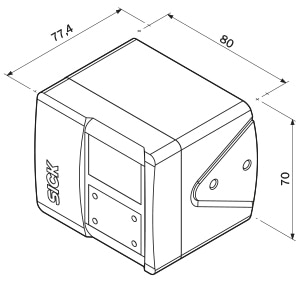
"What makes our blue camera special, in addition to its compact dimensions, robust design and exceptional data quality, is its programmability. Edge computing allows apps to be programmed directly in the sensor. Depending on which application is to be triggered with the sensor, the customer can choose the appropriate software – software-defined sensors, in other words. As well as the camera, the device delivers the computing capacity that makes it so versatile,” says Anatoly Sherman, Head of 3D Snapshot, Product Management & Applications Engineering.
With the yellow safeVisionary2, however, the main benefit is right there in the product name: safety. Most of the time, that means preventing collisions in mobile robots, creating a 3D protective field for collaborative robots or preventing service robot from falling. “Our yellow cameras are certified for that kind of job; in this case, by TÜV. That includes the integrated software. It comes installed on the device, because the safeVisionary2 is a safety product. All the user has to do is adjust a few parameters relating to integration and the relevant application, and then the camera can be put into operation right away,” says Torsten Rapp, Head of the Autonomous Safety business unit, as he explains the various potential applications of the two camera sensors.
However, as well as the technology, there is something else that makes these cameras special, and that is the unprecedented collaboration across multiple departments during work on their development. “Our customers are constantly looking at their productivity and want affordable solutions with maximum additional benefit and ever faster turnaround times,” says Sherman. “We regard it as the perfect time to significantly step up our internal collaboration and, for the first time, develop a highly adaptable programmable ‘blue’ camera and a safety-focused ‘yellow’ camera in one project right from the outset.” The blue team contributed 3D expertise over the course of the multi-year development work, while the yellow team brought safety know-how to the table.
New approach requires a new way of thinking
With a task like this before them, everyone involved had to set about changing their mindsets. Certain freedoms that might be available in the development of a blue automation sensor were subject to limitations imposed by the process for the safety version. “Yes, we did occasionally all have to go the extra mile in pursuit of our goal of a more customer-focused approach, but it was worth it,” says Rapp. The new approach enabled two products to be launched in relatively quick succession, and both immediately met with high demand.
For the team members involved, the project is a prime example of how SICK could approach further sensor development in the future. Speaking of the future, things in industry are moving from automation toward autonomization and complete interconnectivity between machinery and sensors as part of adaptive production.
The goal is for all input production data to be evaluated in real time with smart algorithms and for it to be possible for processes to undergo continuous adjustment. This is to result in fully digitalized and interconnected production environments. “Our vision systems, which also work in real time, are a good building block for that,” says Rapp. The cameras act like eyes, delivering exactly the high-quality 3D data that is required for optimized autonomous decision-making. “And we all know that there’s only so much you can do without a good pair of eyes,” adds Sherman.
3D time-of-flight Technology: Precise 3D data in real time
Time-of-flight (3D ToF) refers to a method of measuring the time it takes for a light signal to travel between a camera and a target simultaneously for each point in the image. Once the time of arrival or the phase shift of the reflected light is known, it is possible to determine the distance to the object. The Visionary-T Mini from SICK, for example, delivers more than 6.5 million 3D distance data points per second, all on a very stable platform. This method, also known as 3D snapshot technology, can use time-of-flight measurement to gain a three-dimen-sional picture of even static scenes without any need for actuators or moving mechanical parts in the camera.
Momentum: Magazine from the 2022 Annual Report
It is worthwhile to scrutinize success stories for momentum. What was the moment or occasion that set everything rolling and brought success?
The articles in this magazine show that momentum is no coincidence and is more than just a chain of fortunate circumstances. Momentum comes from intuition, inspiration, experience, competence and passion.
